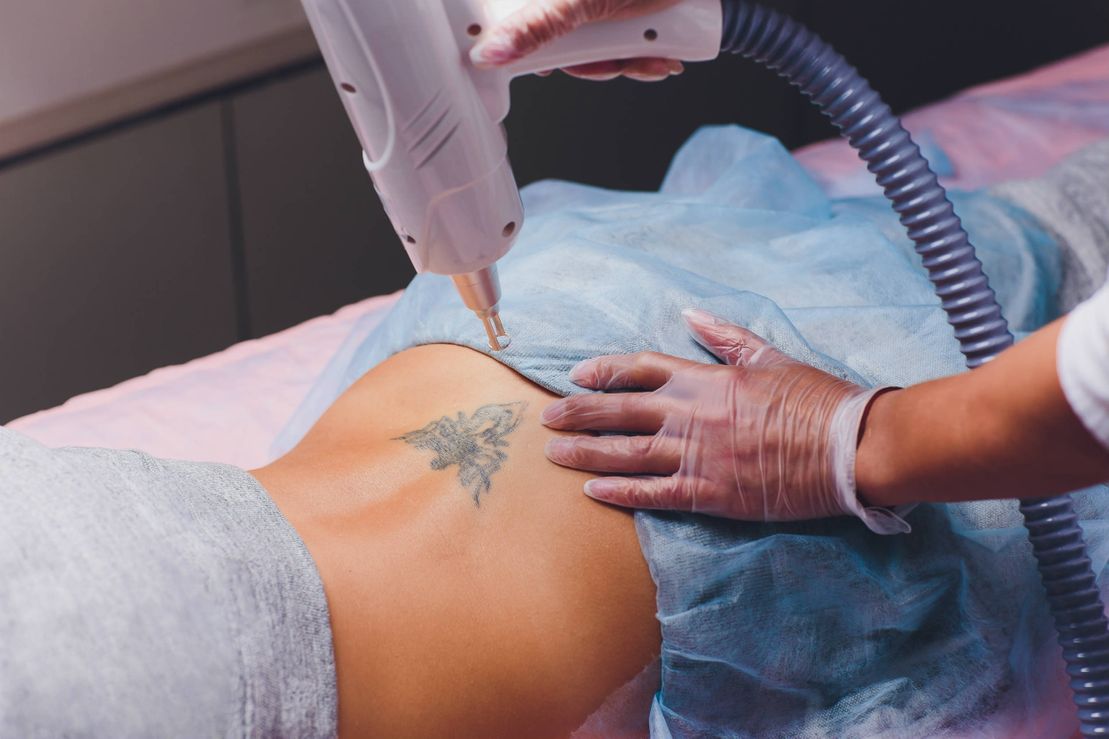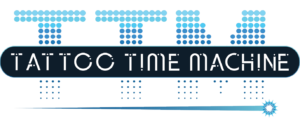Services

Laser Tattoo Removal – Fast, Permanent Results
When you come in for a PicoWay laser treatment, a topical anesthetic cream or local injection may be given to enhance comfort, but you may opt out of this step. In clinical studies, the majority of patients reported mild to no discomfort. The most common immediate side effects included mild redness, swelling, and pinpoint bleeding.
To learn more about PicoWay tattoo removal solutions, download the pdf given below. It has all the information you need to know before opting for the treatment.
Benefits Of PicoWay Laser Tattoo Removal
- Wide range of tattoo ink colors, including black, brown, blue, green, purple, red, yellow, and orange
- Short treatment times
- Safe and non-invasive
- No anesthetics needed
- Minimal discomfort
- Permanent results
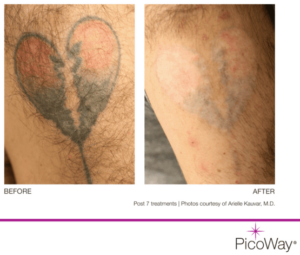
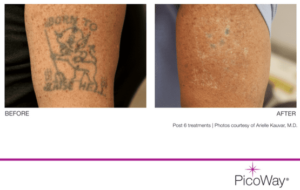

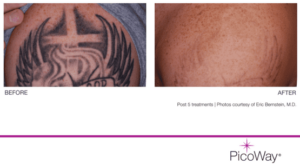
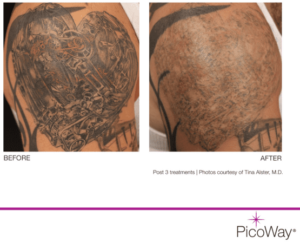
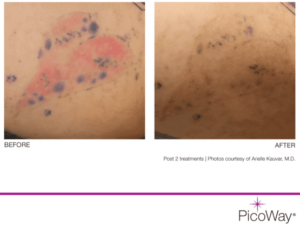
How This Process Works
Tattoo inks tend to be made of compounds from heavy metals such as lead, copper, and manganese. To remove a tattoo, lasers are needed to break up and dissemble the ink particles. The tattoo removal laser is extremely hot, operates in a very narrow frequency, and works on a scale of a trillionth of a second. The heat from the laser expands the ink particle, while the “zap” of the laser discharges quickly enough so that half of the particle remains cool. The opposing cool and hot forces rip the ink particle apart. This process, called photothermolysis, is also used in laser hair removal. Once the lasers break the ink particles apart, your body’s white blood cells can absorb and eliminate them. The laser heat is intense, but because it happens rapidly and is specifically directed toward the ink, the laser doesn’t burn skin tissue – the energy collapses into a shockwave instead. It may illicit a bit of a sting, but the effect usually only lasts just a few seconds. Soon, your tattoo will have completely disappeared.
What Affects Laser Tattoo Removal Results
The number of treatments required will depend on a variety of variables which include:
- Size of the tattoo (larger tattoos will take longer to remove)
- Location of the tattoo (areas with less body fat are more difficult to treat)
- Colour of the tattoo (black tattoos with less shading are easier to treat)
- Skin type (patients with darker skin are more difficult to treat)
- Application method of the tattoo (professional tattoos penetrate the skin tissue more deeply and so will require more treatment; cover-ups of tattoos use more ink and thus are more difficult to treat)
- Age of the tattoo (ink particles lie deeper into the skin as it ages; newer and fresher tattoos are also more difficult to remove)
Call us today for to schedule a consultation. One of our tattoo removal experts will help guide you through a custom plan specific to your tattoos and goals.
